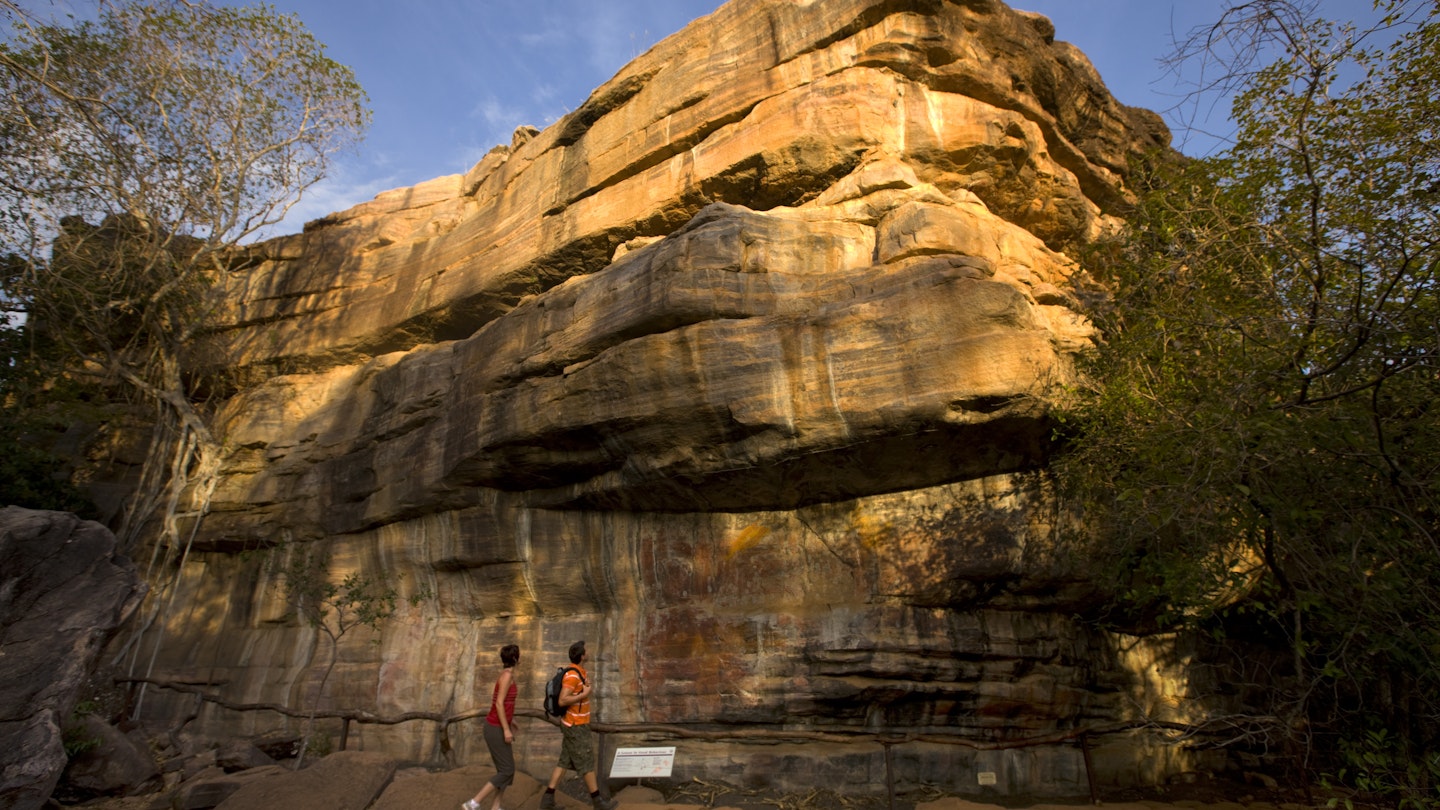Aboriginal art tells a story that began on remote rock walls, now encompassing an astonishing diversity of regional styles. As you journey through the Northern Territory, visiting Aboriginal art centres allows for authentic cultural encounters, providing a chance to buy unique art directly from the creators themselves.

Art and Country
Rock art on remote escarpments and paintings produced by Australia’s First Nations ancestors reveal the human habitation of this land. These precious works tell a story of Country that is tens of thousands of years old. For Aboriginal Australians, Country includes all living things: the people, plants, and animals, embraced by seasons and stories. Consequently, it represents a place of belonging and a way of believing.
The first Aboriginal artist to earn international acclaim was Albert Namatjira (1902–1959), a Western Arrernte man. His first solo exhibition in Melbourne in 1938 sold out in three days and showcased the artistic skill of Aboriginal Australians. Namatjira painted Central Australian landscapes in a predominantly European style. However, the distinctive Aboriginal dot paintings gained global recognition in the 1970s, sharing Aboriginal lore through innovative translations from land to canvas.

Engaging with Aboriginal Australian artist practices opens up new perspectives for travelers. For instance, gazing at a dot painting from the Western Desert allows you to envision the vast spinifex plains and dry riverbeds of the Gibson or Tanami Deserts. Similarly, experiencing a bark painting from the Yolngu people can transport you to Arnhem Land or the iconic rock walls of Kakadu.
While You Are on Country
Darwin and Alice Springs host numerous art centres deeply rooted in remote Aboriginal communities. These centres prioritize the interests of the painters, with ethical buying practices ensuring that artists receive at least 50% of the proceeds. Importantly, reputable centres also provide detailed biographies of each artist and the stories behind their work.

Art centres serve as gateways to Indigenous Australia, providing travelers with opportunities to meet locals beyond traditional tourist experiences.
Visiting an Aboriginal Art Centre
Art centres act as social interaction hubs, attracting creative talents—from seasoned artists to newcomers with untamed styles. The atmosphere is often casual, fostering quiet creativity.
Typically, these centres have two main aspects. Firstly, there’s a shop or showroom, functioning like a gallery with fixed prices. Visitors can explore a range of artworks from beginner pieces to expert creations priced in the thousands.

The second aspect includes a variety of artistic spaces, from indoor studios to informal outdoor painting areas. Here, artists frequently engage in creating intricate basketwork from local materials.
Time to Visit
It’s advisable to check the opening hours of the centres you wish to visit, as most are closed on weekends. To enjoy a more intimate experience, arrive early or late in the afternoon, budgeting at least a couple of hours.
Begin your visit in the showroom to grasp the local artistic style. Explore a wide range of artistic expressions, including painting, sculpture, weaving, and photography, to find what resonates with you while staying within your budget. Furthermore, it’s crucial to understand the profit-sharing practices of the galleries, so don’t hesitate to inquire.
Take the time to absorb the sensory experience presented by closely hung artworks. Always ask about which artists are present during your visit; if you’re fortunate, you may witness a master artist at work.

As you venture into the creative spaces, observe the artists at work. Most Aboriginal artists are welcoming but often shy about sudden tourist interactions. Therefore, it’s important to approach with patience and respect.
Upon your arrival, greet the artists, and once you feel at ease, quietly take a seat and watch them as they create. This is a rare opportunity to witness craftsmanship in action, so savor the moment.
Some artists may willingly discuss their works, yet initial silence often precedes engaging conversations. Building rapport may take time, but it’s worth the effort to gain deeper insights into their artistry.
By the end of your visit, you may leave with an original piece of art to cherish at home. Should you linger long enough, you might enhance your experience with treasured memories and newfound knowledge about Australia’s indigenous culture.
Aboriginal Art Centres in the Northern Territory
Coomalie Cultural Centre, Batchelor (cac.batchelor.edu.au) located on the cusp of Litchfield National Park.
Merrepen Arts, Daly River (merrepenarts.com.au) one of the more innovative art centres.
Injalak Arts & Crafts Centre, Gunbalanya / Oenpelli (injalak.com) one of the Northern Territory’s most impressive art centres.
Ghunmarn Culture Centre, Beswick / Wugularr (djilpinarts.org.au) also known as Djilpin Arts.
Ngukurr Arts Centre, Ngukurr (ngukurrarts.net) located on the road through southwestern Arnhem Land.
Waralungku Arts Centre, Borroloola (waralungku.com). Out on the Gulf of Carpentaria. Don’t miss their excellent art-and-culture immersion experiences.
Warlukurlangu Art Centre, Yuendumu (warlu.com) along the Tanami Track in Yuendumu.





